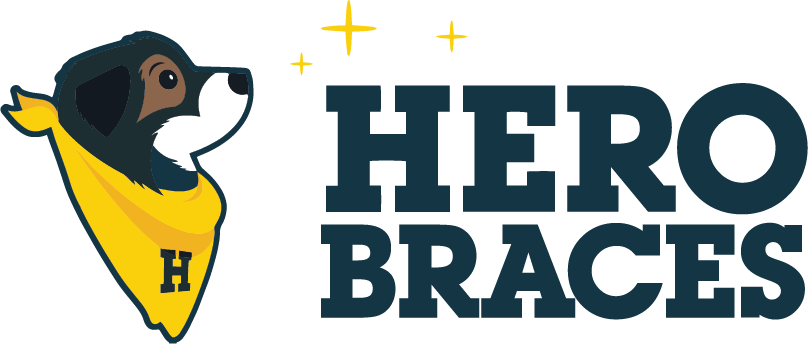Dog Bracing Made Simple
Tips and tricks to help your dog succeed with added support

Dog Bracing Made Simple
Stifle Braces in Dogs: Freedom Without the Top Strap
As devoted pet parents, we witness the sheer exuberance our dogs bring to life. But when injury strikes, it’s our duty to find solutions that restore their mobility and joy. Enter the canine stifle brace, a remarkable aid for dogs suffering from CCL (cranial cruciate ligament) tears.
Canine CCL Tears
Canine CCL tears can severely impact a dog’s stifle joint (akin to our human knee). These tears result from factors like obesity, strenuous activity, genetics, and aging. Certain breeds, including Labrador Retrievers, Staffordshire Terriers, and Saint Bernards are more susceptible. Symptoms vary from limping to complete lameness. If your furry friend shows signs of ligamentdamage, consult your veterinarian. They’ll perform a physical evaluation and X-rays to confirm the diagnosis.
Surgery and Beyond
While surgery is recommended and considered the standard of care, it’s not always feasible due to health issues or cost. That’s where non-invasive treatments come into play:
• Joint Supplements: Fish oil, turmeric, glucosamine, and chondroitin sulfate aid in comfort.• Diet and Exercise Modifications: Proper nutrition and controlled activity help maintain a healthy weight.• Integrative Therapies: Acupuncture, Laser therapy, Extracorporeal Shockwave, Pulsed Electromagnetic Field, Animal Chiropractic, and Physical Rehab support recovery.• Pain Management: Medications alleviate discomfort.• Custom Bracing: Supports the stifle and applies corrective forces to help prevent excessive movement.
The No Top Strap Solution
Hero Braces revolutionized canine stifle support. Unlike traditional braces, they skip the top strap, offering unparalleled comfort and freedom. Here’s how they work:• Stabilization: Hero Braces focuses on increased stability for rear legs and knees.
• Custom Fabrication: Each brace is tailor-made to fit your dog’s unique body structure, ensuring optimal support.
Why Hero Braces?
• Durability: Hero Braces withstand rough play. No worries about stretching or tearing fabric.• Sleek Design: Lightweight and sleek, they won’t hinder your dog with extra weight.• Custom Fit: With over 200 dog breeds, customization matters. Hero Braces nails it.
The Science Behind the Top Strap Removal
Hero Braces initially explored the force-couple concept, akin to approaches used in human medicine for addressing cruciate tears. However, canine biomechanics posed unique challenges. The origin and insertion of hamstring muscles in dogs differ from humans, affecting brace fit. Canine thighs change shape significantly during hip and stifle (knee) movement, causing fitting issues. The top strap often loosened during walking due to changing thigh size. To address this, Hero Braces consulted biomechanists at the University of Nebraska. They found that maintaining tension without design changes was mathematically impossible. By removing the strap, Hero Braces reduced fitting issues while still mitigating tibial thrust and cranial drawer. Our clinical experience showed that pets continue to do well without the top strap. For a deeper dive, watch out for Drs. Millis and Levine’s upcoming textbook on Canine Rehabilitation and Physical Therapy.
Remember, a stifle brace isn’t just a device; it’s hope for your beloved companion. Whether your pup is a playful Labrador or a dignified St. Bernard, consider this simple solution to restore their zest for life.
I hope this blog sheds light on the innovative design of no-top strap stifle braces. If you have any questions, visit Hero Braces.

Dog Bracing Made Simple
The Casting/Impression, “As easy as Wrapping a Bandage?!”
Does the Custom Orthotic Casting Process Intimidate You?
If you really think about it, the impression process isn't much different than wrapping a bandage. We find vet nurses excel at the process in the CE courses we teach! Check out a video of our CE course at the bottom of this blog.
Old-School Casts....Don't Make Me Cringe!
Many Doctors are hesitant to work with Orthotics because of the Casting/Impression process. Mention the word “cast” and Doctors envision an old-fashioned plaster cast that is removed with a saw.
This material was fine in its day but today is not needed for the Impression process. The fiberglass impression material currently used is easier to work with and does not require a saw for removal.
Creating a dog’s custom knee, ankle or wrist brace is a breeze. Hero Braces has tried to simplify the process to make successful impressions a breeze.
As easy as wrapping a bandage.
Creating the Impression for a custom brace is an easy task. As practitioners, bandages are something we use daily. The light tension and 50% overlap used in creating a bandage are the same when creating an Impression. Patients can lie in lateral recumbency and staff use is the same. Sedation is rarely needed. The fiberglass material used in the Impression is thin and cuts easily once it cures.
I don’t have time.
We all worry about the time it takes to get tasks done. The Impression process can take as little as 15 mins. Many practices have qualified Veterinary Nurses that place bandages for their Doctors every day. The Casting/Impression can be turned over to them as well, freeing up the Doctor to diagnose and prescribe Hero Braces as treatment for issues such as Cranial Cruciate Ligament Rupture, Hyperextension of the Carpus and Achilles Tendon Injuries.
We’ve got the tools you need.
Our impression kit comes with everything you need to complete the process and we are here to help.
Stockinette to cover and protect the limb
Fiberglass tape to create the impression
A guarded blade knife to cut the Casting/Impression tape
A grooved strip to place under the Casting/Impression tape to guard the limb and act as a cutting guide
Online and in person labs to demonstrate and practice the process
Anything new can be intimidating. The Casting/Impression uses similar techniques to wrapping a bandage and is learned quickly by you and your staff. Let us help you help more pets. Call Hero Braces for a Casting/Impression kit today.
We teach casting at the University of Tennessee Canine Rehab Certificate Course. Below is a video of us teaching the casting process. Watch it to feel confident about casting. It really is just a version of bandaging!

Dog Bracing Made Simple
Understanding CCL Tears in Dogs and How Braces Can Help
Understanding Cruciate Tears in Dogs and How Braces Can Help
Cranial Cruciate tears, or CCL tears, are a common injury in dogs and can be seen in most breeds, although sporting and working breeds are seen more often. The CCL is a crucial ligament that stabilizes the knee joint, and when it tears, it can cause significant pain and mobility issues for your furry friend. Understanding the causes, symptoms, and treatment options for CCL tears can help you provide the best care for your dog.
Causes of CCL Tears in Dogs
CCL tears in dogs can occur due to various reasons. Cruciate disease is a recent term that describes the gradual weakening of the fibers of the Cranial Cruciate Ligament over time. This leads to progressive tearing of the fibers that results in partial or complete failure. This is different from people who can tear their ACL from a fall or accident. Dogs that are overweight, have poor conditioning, or have patella luxation are also at risk of CCL tears due to the added stress on their joints.
Symptoms of CCL Tears in Dogs
Recognizing the symptoms of a CCL tear in your dog is crucial for early intervention. Some common signs include:• Limping or favoring one leg. Can be persistent or off and on.• Difficulty rising or jumping• Swelling around the knee joint• Pain when the knee is touched or moved• Decrease in activity or reluctance to play or jump
If you notice any of these symptoms, it's essential to consult your veterinarian for a proper diagnosis and treatment plan.
Diagnosis and Treatment Options
Diagnosing a CCL tear typically involves a physical examination, testing for Cranial Drawer/Tibial Thrust, and radiographs or an MRI. Once confirmed, treatment options can vary depending on the severity of the tear and your dog's overall health.
Surgical Treatment
In severe cases, surgery may be necessary. There are several surgical techniques available, including:
• Tibial Plateau Leveling Osteotomy (TPLO) and CORA-Based Leveling Osteotomy (CBLO): This procedure involves making a semi-circular cut under the tibial plateau to allow altering the angle to stabilize the knee joint.• Extra-Capsular Suture Technique: This method uses sutures to mimic the function of the CCL and stabilize the knee.• Tibial Tuberosity Advancement (TTA): This surgery changes the alignment of the Tibial Crest and Quadriceps muscles to reduce stress on the knee. Surgery is considered the Gold Standard for patients who can have anesthesia. Recovery time depends on the severity of the damage to the Cruciate ligament and other structures of the knee.
Non-Surgical Treatment
For less severe cases or dogs that may not be good candidates for surgery, non-surgical treatment options are available. These can include:•: • Weight Management: Maintaining a healthy weight can reduce stress on the joints and improve mobility.• Physical Therapy: Exercises and therapies can help strengthen the muscles around the knee and improve stability.• Pain Management: Medications and supplements can help manage pain and inflammation.• Custom Bracing
How Braces Can Help
One of the most effective non-surgical treatments for CCL tears in dogs is the use of custom braces. Custom Dog knee braces are designed to provide support and stability to the injured knee, allowing your dog to move more comfortably and reducing the risk of further injury.
Benefits of Dog Knee Braces
• Support and Stability: Braces help stabilize the knee joint, reducing pain and improving mobility.• Prevent Further Injury: By providing support, braces can help prevent additional damage to the knee.• Comfort: Modern braces are designed to be comfortable and adjustable, ensuring a proper fit for your dog.• Cost-Effective: Compared to surgery, braces are a more affordable option for managing CCL tears.
Choosing the Right Brace
When selecting a knee brace for your dog, it's essential to consider factors such as size, fit, materials and whether it will be custom made for your pet. Custom braces have a better fit and function than soft over the counter braces. Consulting your veterinarian for recommendations and aftercare will ensure the brace is properly fit to provide maximum support.
Conclusion
CCL tears in dogs can be a challenging and painful condition, but with the right care and treatment, your furry friend can recover and enjoy a happy, active life. Whether through surgery, physical therapy, the use of a Custom brace, or a combination, there are options available to help manage CCL tears and improve your dog's quality of life. Always consult your veterinarian for the best course of action and provide your dog with the love and support they need during their recovery.

Dog Bracing Made Simple
4 Tips - The Perfect Dog Brace Cast
Creating the perfect Casting can be summed up in four essential tips.
Position. Tight. High. Criss-Cross. Understand each to make yourself the Casting superstar for Custom Orthotics!
Let’s be clear on what “Casting” means in this article. Old school casts meant a kid with a broken arm had white plaster wrapped from elbow to wrist. These aren’t your old school casts!
The word “Cast or Casting” is used because it sounds like “cast.” The material is fiberglass casting tape, used to make an impression of the limb.
Position - The "Magic" of Walking Easily
This is where Hero Dog Braces really differ from other custom bracing. We ask for a cast with the dog lying on its side instead of standing.
This is important for a couple of reasons.
First is gravity. Gravity is really what feeds any deformity. The body weight pushes down on the legs, worsening the deformity. Casting a dog while lying down neutralizes gravity, allowing you to focus on getting the limb into the corrected position.
Second is rational. Can you really get a dog to stand still for 15 minutes while the cast sets? Much less "correct" the leg while doing this. In our vet clinic, our team holds the dog to trim its nails. Casting is no different.
So how do we correct the position? It is important to remember what deformity we are trying to support. The cranial drawer of a cruciate tear is a unique motion. We reduce it differently from angular deformities like varus or valgus.
When casting for the Knee Brace, pull the leg straight down perpendicular to the body. This will reduce the cranial drawer. Trying to cast in a “natural” standing position can cause the tibia to shift forward and adversely affect the fit and function of the custom orthotic.
For the Ankle Brace, place the foot and ankle in a natural standing position.
The Wrist Brace reduces any varus (foot angled towards midline) or valgus (foot angled away from midline) deformity and places the foot in a natural standing angle. Typically, the pet is straight through the wrist, but it can vary with breed. If this one is confusing, give us a call, and we can help guide you through the process.
Tight - Show us the Boney Landmarks
A Tight Casting is necessary for precision work. When the Hero Braces lab has exact dimensions taken from the Casting, they can create the best custom fit.
The Casting tape should be wrapped snugly to outline the bony prominences or bumps on the leg. If the Casting tape does not have sufficient tension, it will droop and fail to outline the prominences. This creates guesswork for the lab or necessitates another Cast.
Remember, no padding is added, just a layer of stockinette to protect the limb. This keeps the Cast true to the leg's shape. Because the Cast will be removed as soon as it hardens, you don’t need to worry about pressure points.
High - Capture the Groin
For the stifle, make sure the protective stockinette goes high into the groin or beyond the area to be cast. This is really important to have your helper focus on keeping the stockinette high. Notice where the hands are; it really helps to pull the stockinette high in the inside of the leg.
When starting the Cast, casting tape is spiraled up the leg with a 50% overlap. The Casting tape wraps high into the groin for Custom Dog Knee Braces or to the joint above for the Wrist and Ankle Braces. Be sure to wrap to the end of the foot for our Custom Wrist and Ankle Braces.
This technique enables the Hero Brace lab to identify landmarks, take measurements, and plan the proper dimensions of the Custom Brace.
Criss-Cross - Make it Strong AND Thin
This tip will make you happy when it comes time to cut off the cast. A thin cast is so much easier to cut through.
A 50% overlap of the Casting material wrapped around the limb is completed by spiraling down at a 45-degree angle, like the spiral on a candy cane. Criss-crossing the material's weave creates a strong yet light Cast. The three layers created are thin enough to be cut off easily, yet they stay together during shipping and at the lab.
For reference, download our Casting Tips PDF.
For a more in-depth video about casting. Watch our course from the UT Canine Rehab Lab
If you have any questions or need a little help, we are here to support you. Make a quick phone call or send us an email.
Hero Braces want to help you help more pets.







